How I Organize My (Lossy) Music Collection
I use MusicBrainz Picard to automatically give my files the right names and directory structure, based on the following formula: Artist/yyyy-mm-dd Album [filetype@bitrate]/Artist -##- Track
For this purpose I use this Picard rename script.
$if2(%albumartistsort%,%artist%)/%date% %album% [%_extension%]/%albumartistsort% -$num(%tracknumber%,2)- %title%
Which, as Picard puts it, results in Beatles, The/1965-08-06 Help! [mp3]/Beatles, The -07- Ticket to Ride.mp3
Everything following this is outdated.
To illustrate the procedure I use for ripping a CD, I will rip Heathen by David Bowie. I am currently in love with this album which has managed to somewhat hide from me, despite being in my CD collection for a couple of months. Everything I could find to download from the internet was low quality, so I had to rip it.
To do this I use CDex. Development is apperently dead right now and it would be smart to replace the included lame_enc.dll by a new one to gain the advantages it offers.
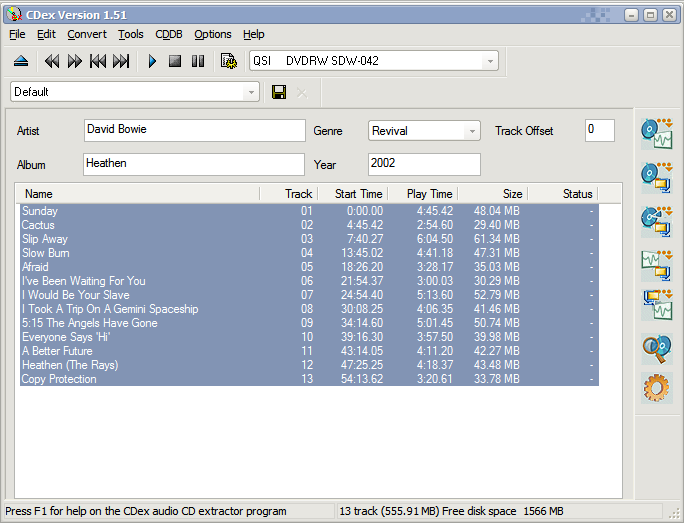
After having inserted my CD I queried CDDB (or FreeDB, I don’t remember what I set it up to do). It now shows up like this and you could start ripping right away. But first you’d better adjust a few settings.
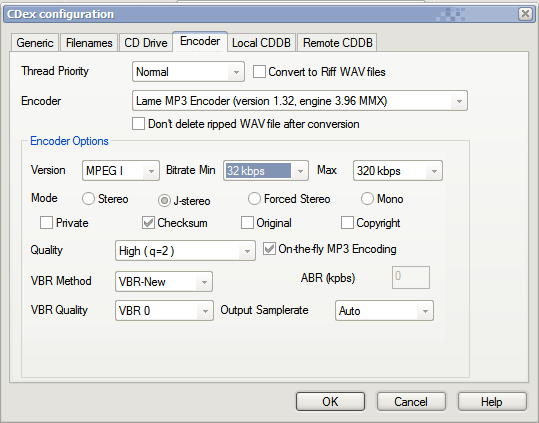
As I mentioned I’m in love with this album. The settings I selected are pretty much the highest quality you should ever aim for before going lossless with something like FLAC. 320kbps CBR mp3’s simply aren’t worth the size they take as they’re still lossy, despite having very few artifacts. For a CD you do not wish to experience on high quality you should select a more reasonable VBR quality, like VBR5 (“normal” quality). Or something lower or higher, whatever you prefer. In any case you’re advised to use VBR to get the optimal quality versus size experience. As VBR method I used VBR-new, which is the same as VBR-MTRH, I just like the look of it better in the settings this way. In the past they were different things.
Apart from this it is important to set the ripping method to full-paranoia under the CD Drive tab. That way the chance for reading errors in your ripped file is minimal.
Now that my music is ripped I have to tag and rename it to make it fit into my collection. For that purpose I use Picard, which does most of the work for me and adds the MusicBrainz tags, which are important for integration of Last.FM with the MusicBrainz database someday. Little of my music includes this, as I only use it since recently.
After dragging it into Picard and telling it so search, it found the album I just ripped. So I click tagger and it associates my tracks to the data in the database. I let it write the tags in ID3v2.3 instead of ID3v2.4 because that is more globally compatible among applications.
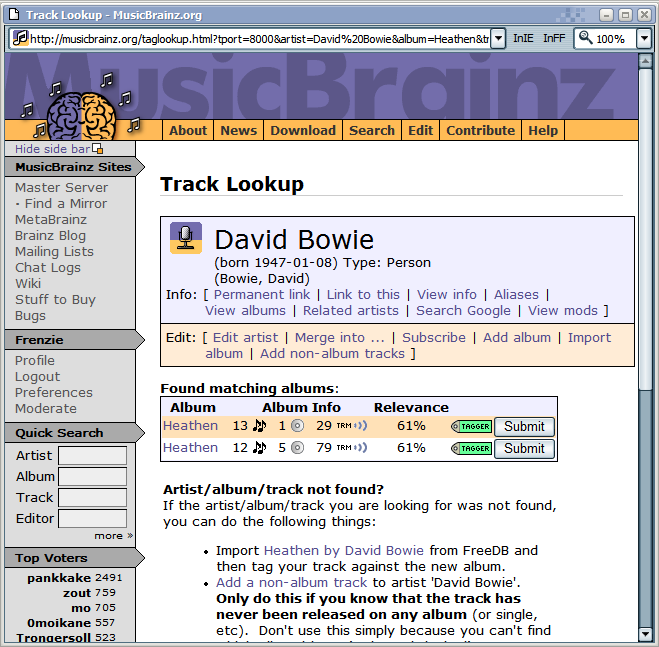
Everything is ready and all I have to do now is let it write the files in their new directory structure and naming structure.
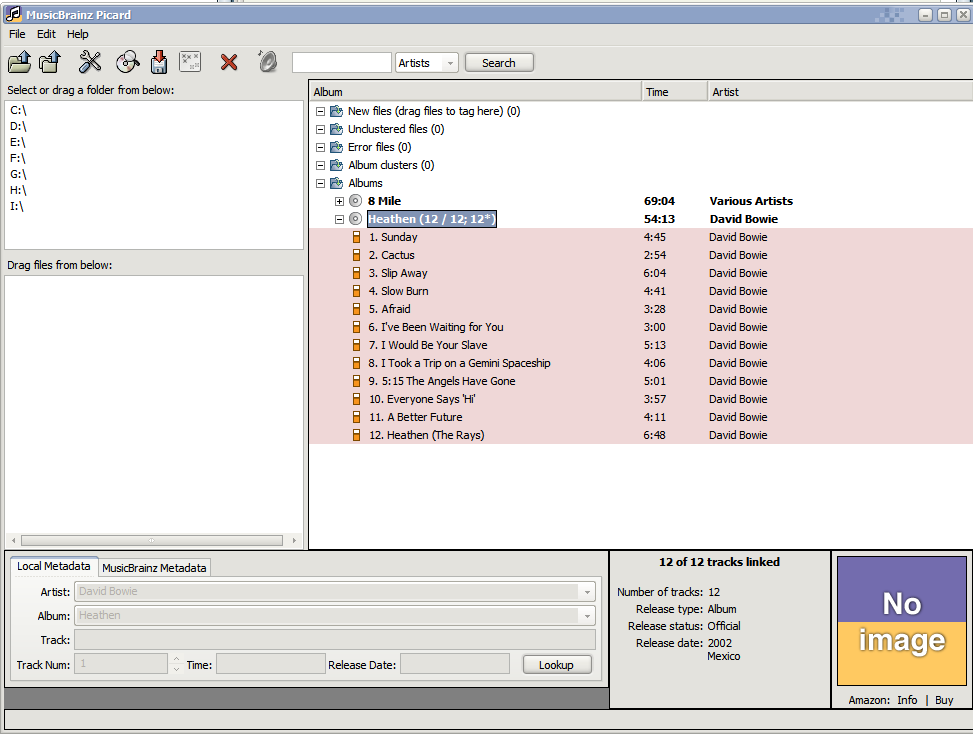
But what is this. Apperently the month and day of release are unknown. Luckily there are more sources for this kind of stuff, most notably Discogs (specialised in music) and Wikipedia (many fans of artists hang around and add data like this).
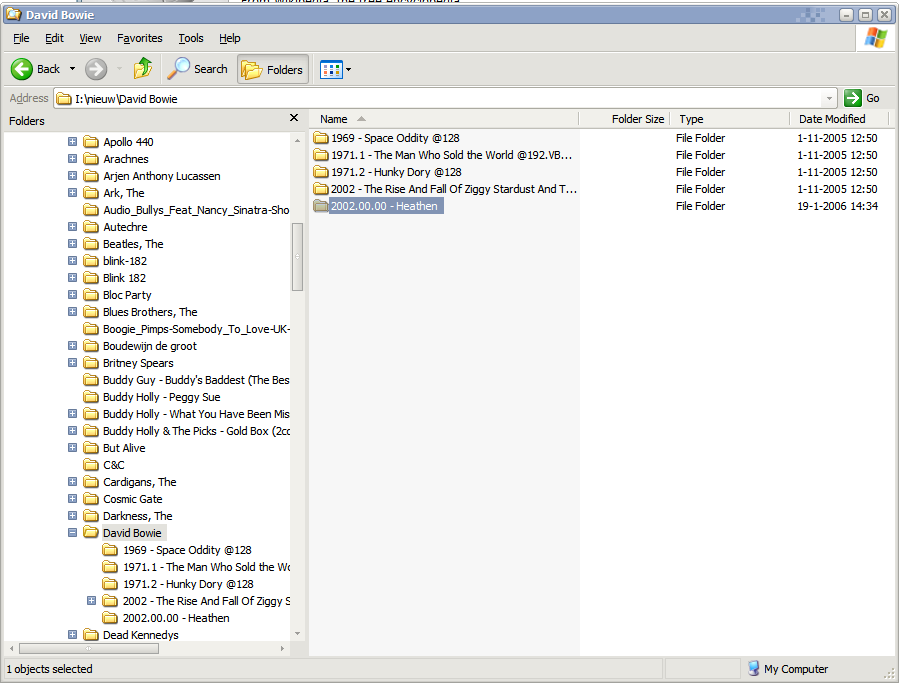
And indeed the data is available in Wikipedia.

So now I can edit the folder name myself. I also added the information to MusicBrainz so that people doing a similar process to mine can profit from what I looked up.
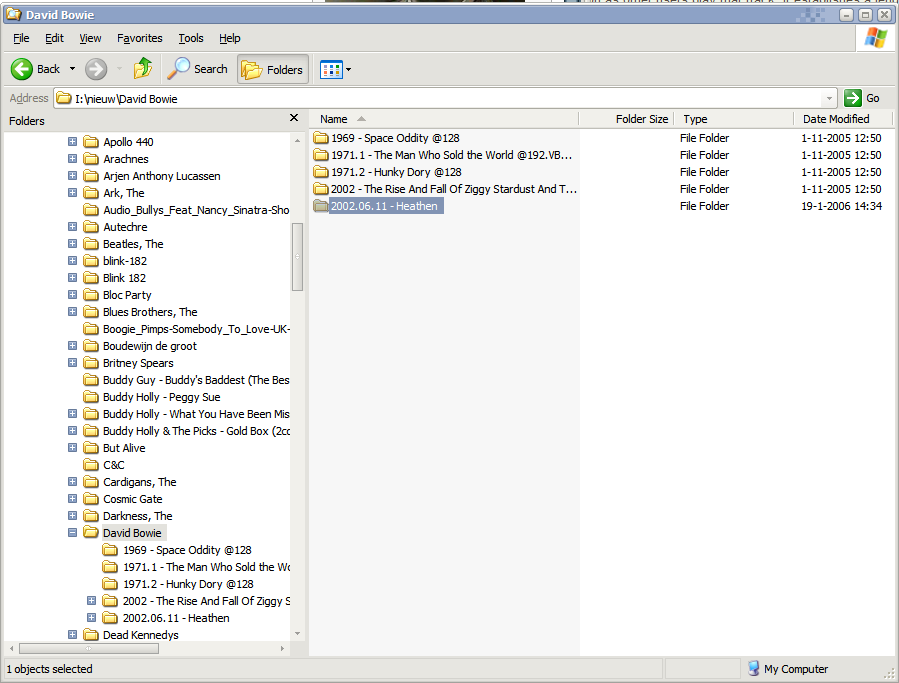
Now that this is done I use Tag&Rename to add some additional info, album art and album review to be exact. Both are grabbed from Amazon automatically.
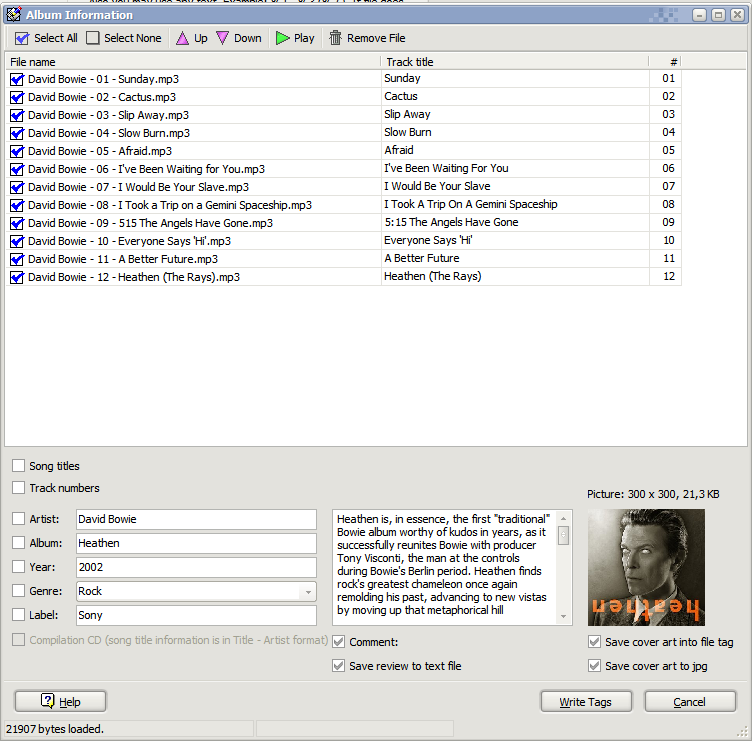
Now I’m nearly finished, but I need to do a few more things. Firstly I wish the release date to display completely in foobar2000, so I add it to the DATE field like DATE=yyyy\ddmm, where the backslash separates two entries. Also foobar2000 tells me the exact average bitrate of the album, which isn’t that important as it’s just an average, but it’s a nice indicator for me to see that I don’t need to rerip it. For example my Eminem albums had @160 in the folder which allowed me to quickly see that I wanted them higher quality.
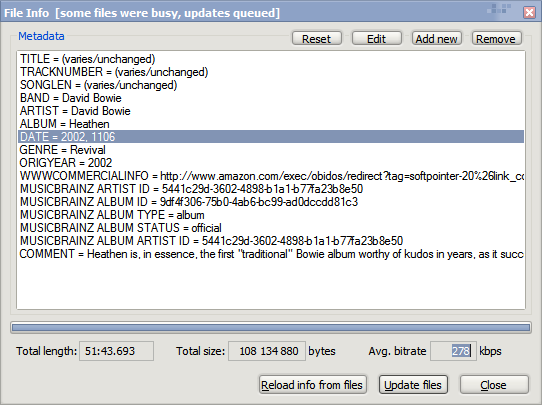
So now I add the bitrate to the folder name, manually.
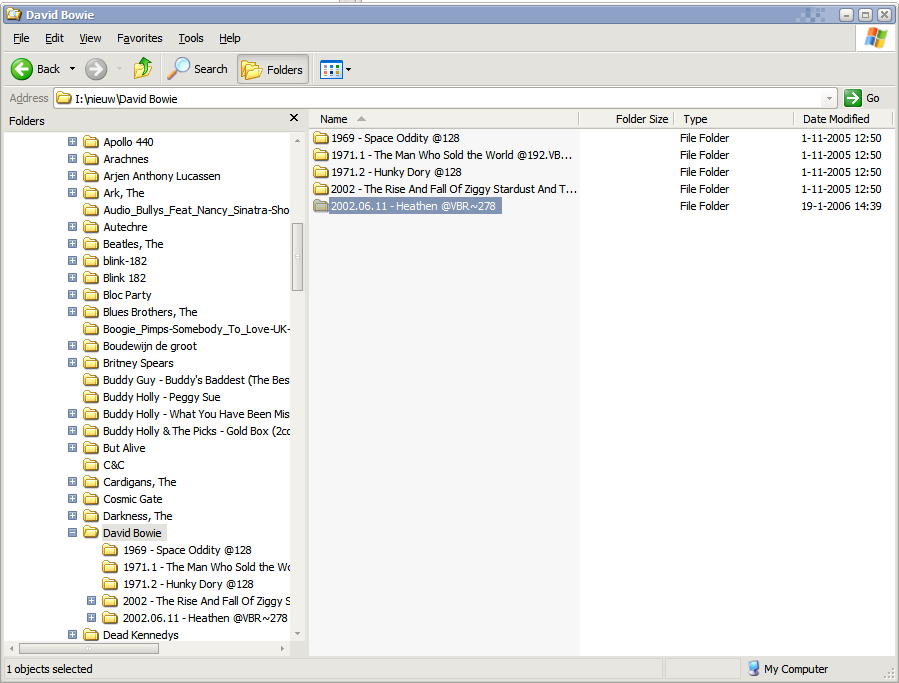
And a final check in foobar2000. The album is now ready to move from my temporary folder (for albums which I yet have to prepare) to my music collection folder (which is all organised like this).
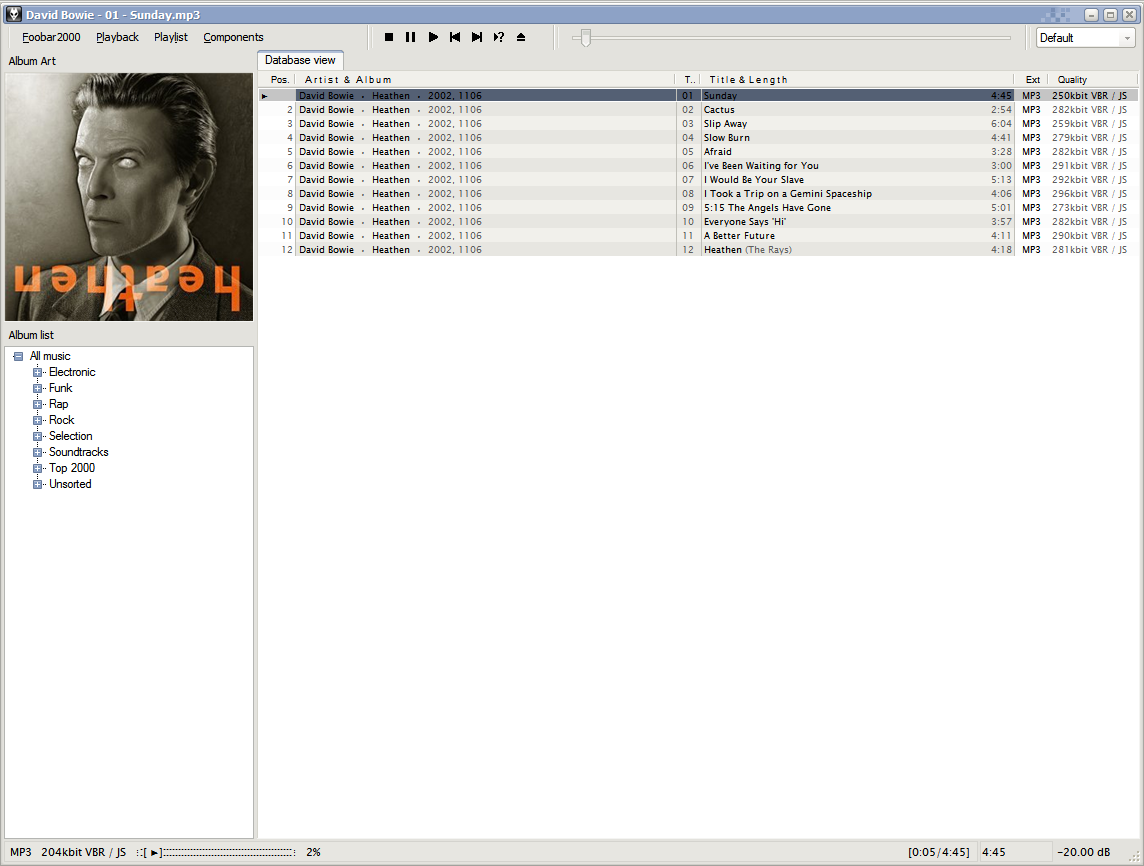
As a final note, I think I should have ripped this album in VBR quality 2, as the bitrate on this album was a little overdone.
I do specifically not follow the ÜberStandard, for various reasons. I do however follow a few of the conventions in there, although I reached them by myself, before I knew of its existence.
If you think this method eats time. All that ate some time I might have used differently was writing this down. The actual process is only very short and can be done while doing other things. For example while ripping the album I already typed the first few paragraphs.
Did you consider my explanation useful or just a bunch of crap? Leave your comments. 😛
That is way too complex.
Part of the issue with my music categorization is that I have it on two computers. I guess when I get my iMac I can really setup my music nicely and make sure I have it all tagged properly and just sync it to my iBook (maybe I should get .Mac).
At the time I have my music nicely categorized on my iBook and some loose songs for listening on my PC. In about a month I’ll set out some time to really categorize everything nicer.
I of course do all of mine with iTunes. Anything I buy from the store has it all already. Other music I simply find the album art, download it to my desktop and click and drag. Sometimes I’ll add the lyrics as well. Then I spend time adding the album, track number, etc.
February 7, 2006 @ 3:24Permalink
Ethan Poole
It looks like a lot of screenshots, but it’s just start program, click one or perhaps two buttons and exit again. I’ll be damned if the entire procedure takes more than a minute (including adding missing data to MusicBrainz which usually isn’t neccesary). My method was easier when I only used Tag&Rename in combination with Amazon for all of this (and I didn’t do the complete original releasedate back then), but not significantly. As said, my method is only slightly below the ÜberStandard, although I don’t plan on it to ever be ÜberStandard.
Of course if you never actually rip music from your cd’s to listen to on your computer it might be of less importance, however, as said, if I download instead of rip as it’s faster, then I still apply these methods, otherwise it doesn’t fit into my collection.
As with the Eminem example, I ripped those albums years ago, back in 2002 or so. So it was with a now ancient version of BladeEnc, since then discontinued as the author considers Ogg Vorbis a better alternative. I personally don’t really care (although with Ogg you seem to be able to have better quality sound at lower bitrates thus filesize), but mp3 is more globally compatible, thus I use the best there is, LAME VBR.
Anyway, thanks to my semi-recent addition of album bitrates to the folder names, when I was taking a quick look through my music collection because I was a little bored, I saw I could rerip my Eminem albums to have them in better quality. Of course, for everything I ripped since about 1.5 years ago this is no longer relevant, but it still is if I decide to not rip something for now and just take the lower quality (128kbps or so) mp3 floating on the internet.
And it still seems you adding the track number and such manually is far more complicated than letting Picard do it for you. 🙂
February 7, 2006 @ 11:01Permalink
Frans
I tried tagging my music with the program, did a pretty good job except on Foobar2000 it didn’t pick up all the information for all the tracks for some reason.
For example it didn’t list the track number or artist for Arctic Monkeys new album. This also occured with an Ash album, Jose Gonzalez’s album and John Frusciante’s album.
That kind of annoyed me but overall it seems quite good except it doesn’t show the images allocated by Picard either.
February 8, 2006 @ 20:04Permalink
Tom
Picard started doing things differently internally, so here’s what I use to make it behave more like it used to on multi-disc releases:
May 13, 2013 @ 21:13Permalink
Frans